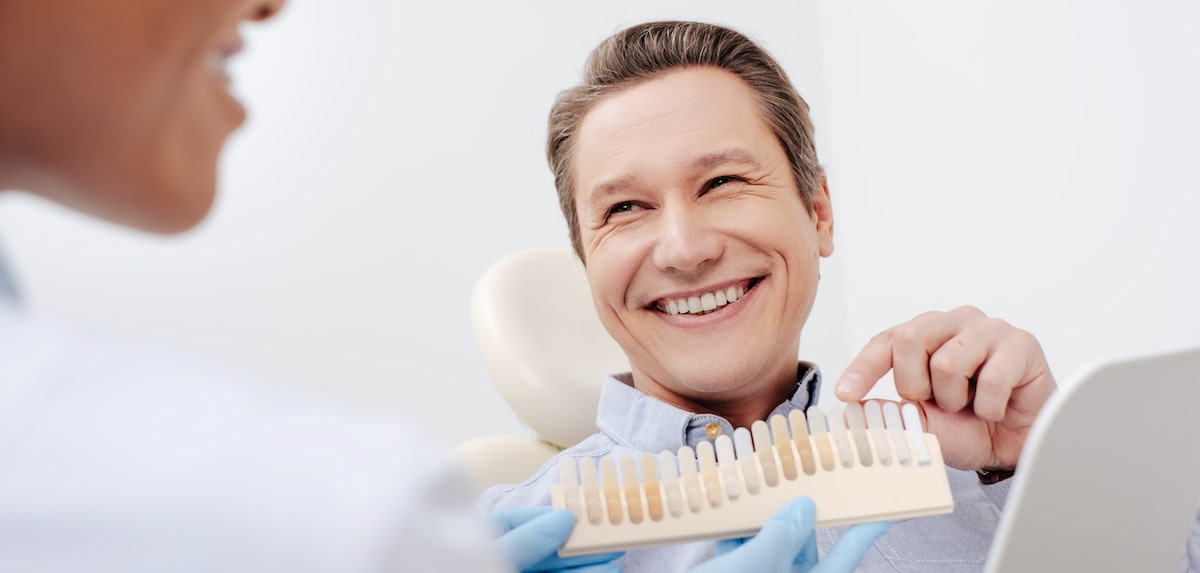Cosmetic dentistry is able to make changes to the teeth and gums that improve both the functional and aesthetic aspects of the mouth. One of the things to remember about cosmetic dentistry, as opposed to traditional dental procedures like filling cavities, is that a cosmetic dental procedure is an elective procedure. In other words, the patient is having the dental work done to improve the smile instead of the procedure being deemed medically necessary by a dentist. While there are some cosmetic dental procedures that can have functional and restorative benefits, cosmetic dentistry is often desired by a person that is self-conscious about their smile and wants to make changes to teeth and gums that are less than ideal in their appearance. Check out our list of some of the most popular cosmetic dental procedures currently being performed and the benefits they can provide to patients.
Popular Cosmetic Dentistry Procedures
- Veneers are placed on the teeth and they are made to resemble the natural teeth of the patient. Dental veneers are usually made of porcelain and are personalized to fit the teeth and needs of the individual patient. Veneers attach to the front of each tooth through the use of a dental adhesive. Veneers are often the best choice for patients that want to address cosmetic issues with their teeth such as damage to the enamel of the teeth, cracked or crooked teeth and the closing of noticeable gaps that are located between the teeth. The veneers are wafer-thin and they can also camouflage any discoloration of the teeth that doesn’t respond well to attempts to perform teeth whitening.
- Inlays and Onlays, AKA indirect fillings, are used by a dentist when a tooth does not have enough structure left to support a regular filling. Inlays and onlays can also be used on teeth that are suffering from mild decay. If the cusp of the tooth does not have any damage, an inlay is placed directly onto the surface of the tooth. If a large part of the tooth is damaged, an only is used in order to cover the whole surface of the tooth. In general, inlays and onlays are used by dentists to strength the teeth, prevent any further deterioration of the teeth and restore their shape.
- Dental Implants are ideal to fill-in the gaps that are left behind in the mouth after the loss of a tooth. They replace one, or multiple, missing teeth so the patient will enjoy an improved function to the mouth. Dental implants are much like small screws and they are surgically placed in the jaw of the patient. Once they are placed behind the gums of the patient, the posts of the implant fuse to the natural tissue of the bone and become part of the natural anatomy of the patient. Dental implants can include bridges (multiple implants across several teeth in the mouth) or crowns (single implants placed on a tooth).
- Dental Bonding is performed to help repair teeth that damaged or decayed. The teeth can often be damaged through bruxism which is a condition where patients grind or clench their teeth without realizing they are performing this action. The teeth can also be chipped or damaged due to some sort of accident or trauma. A material that resembles the color of the teeth is placed on the surface of the tooth. It is then molded to fit the shape of the tooth and provide a more aesthetically pleasing look to the damaged tooth.
- Composite Fillings are made of a material that is shaded to match the look of the surrounding teeth. The material makes it hard for others to realize a person has fillings. Many patients decide to have composite fillings placed in their mouth in the areas where they had older, metal fillings that were placed by a dentist in the past.
- Invisalign is a system of clear, plastic aligners that work to gently and slowly straighten teeth that are not aligned correctly. The patent wears an aligner for 22-23 hours per day for about two weeks. The doctor inspects the teeth to make sure the current aligner has moved the teeth the maximum amount possible before the next aligner is worn by the patient. Unlike traditional braces, the aligners can be removed when it is time for the patient to brush their teeth.
Cosmetic Dentistry Examination Appointment
Patients that are interested in having a cosmetic dentistry procedure should schedule an appointment with a board-certified cosmetic dentist. The dentist will discuss the desired final results with the patient as well as perform an examination of the mouth of the patient. The dentist will determine the amount of changes that can be made to the teeth and gums and set realistic expectations for the patient. Cosmetic dentistry can provide a brighter smile and improved functionality when performed by an experienced and skilled cosmetic dentist.
MA
